Key takeaways
- Choosing the right decoupage brush involves considering bristle softness, handle length, and compatibility with glue thickness for optimal results.
- Techniques such as using gentle strokes and applying glue in thin layers can enhance the quality of decoupage projects and prevent damage to delicate materials.
- Immediate cleaning and gentle care of brushes, including reshaping bristles after washing, significantly extend their lifespan and maintain performance.
- Experimenting with different brush types, like flat, round, and fan brushes, can unlock new creative possibilities and improve crafting experience.
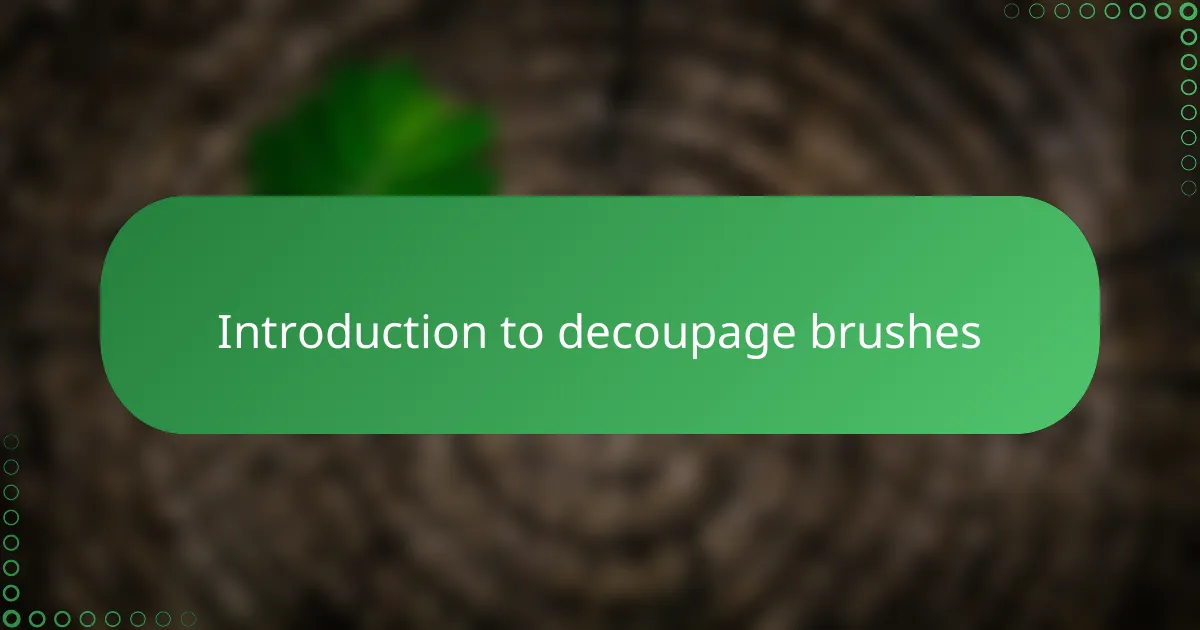
Introduction to decoupage brushes
Decoupage brushes are a surprisingly essential tool in my crafting kit, though I didn’t realize this until I started experimenting with different types. Have you ever wondered why certain brushes create smoother finishes while others leave streaks? From my experience, the right bristles can make all the difference in achieving that flawless, layered look.
When I first picked up a decoupage brush, I underestimated how its shape and softness affected the glue’s application on delicate paper. It wasn’t just about spreading adhesive—it was about controlling pressure and detail, which transformed my handmade projects. Choosing a brush that feels natural in your hand changes the entire crafting experience.
What I find most fascinating is how these brushes balance precision with gentleness—something crucial when working with fragile materials. For me, the routine of selecting and using the perfect decoupage brush almost feels like a calming ritual, one that sets the tone for creativity and care throughout the project.
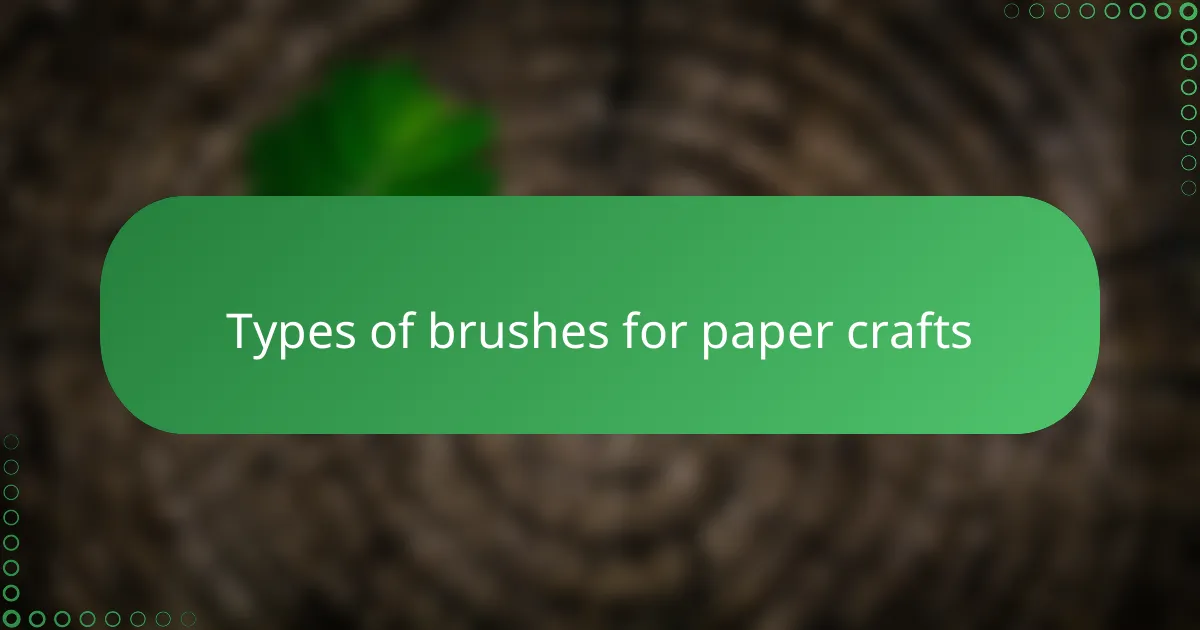
Types of brushes for paper crafts
When I first explored different types of brushes for paper crafts, I was surprised by how varied they are. Flat brushes, for example, are my go-to when I need broad, even strokes of glue or paint. They cover more surface, making the work quicker and cleaner, but I also noticed they aren’t great for tight corners or intricate details.
On the other hand, round brushes have been a game changer for delicate work. Their pointed tips gave me the control I was missing, especially when I wanted to avoid wrinkles on thin paper. I remember struggling with a flat brush that left streaky glue behind—switching to a round brush felt like rediscovering the craft all over again.
I’ve also dabbled with fan brushes, though sparingly, for texture and blending effects. They’re less common in decoupage but worth considering if you want subtle gradients or soft edges. Have you ever tried a brush just because it looked unusual, only to find it became your favorite? That’s exactly what happened with me and the fan brush—it opened up a fresh way to approach paper layering.
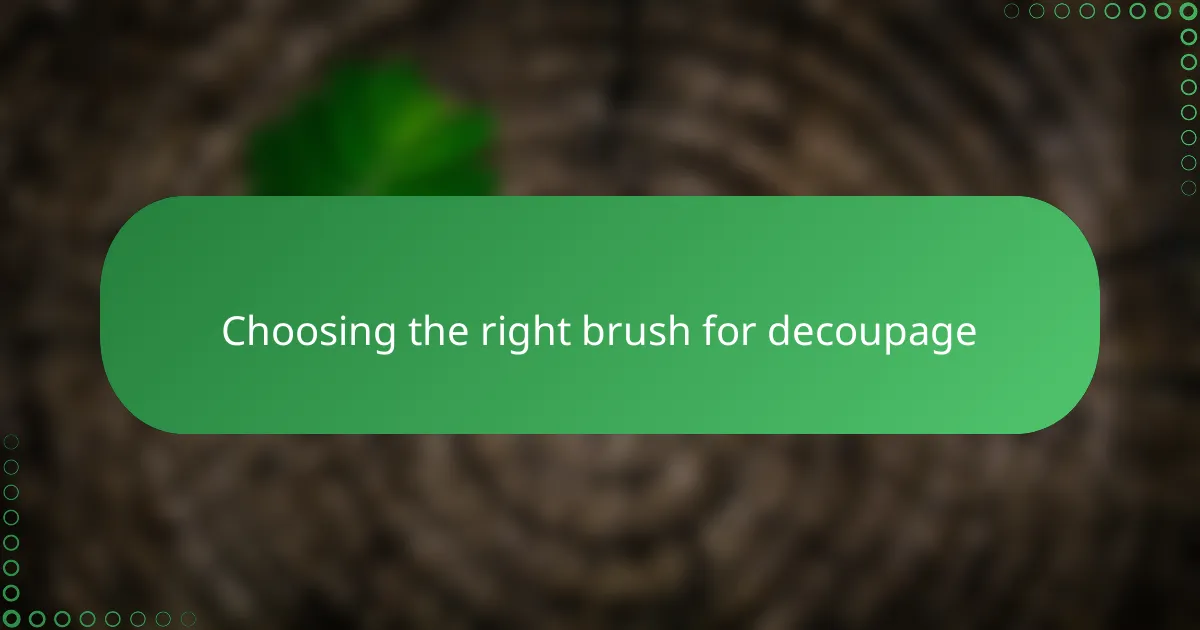
Choosing the right brush for decoupage
Choosing the right brush for decoupage felt like a puzzle at first. I recall feeling overwhelmed by all the choices until I realized that softness mattered more than size. Have you ever pressed down too hard with a stiff brush and ended up tearing your paper? That taught me to prioritize gentle bristles to protect those delicate layers.
Another thing that caught my attention was the handle length and grip. Brushes with short handles seemed awkward in my hand, causing me to lose control, while longer handles gave me the finesse needed for detailed work. It’s surprisingly personal—finding a brush that feels almost like an extension of your fingers makes the whole process more enjoyable and less frustrating.
I also learned to match the brush to the type of glue I was using. Thicker adhesives required firmer bristles to spread smoothly, whereas thin, watery glues worked best with softer, more flexible brushes. This small adjustment saved me from patchy finishes and smudges, proving that choosing the right brush isn’t just about shape but also about how it interacts with your materials.

Techniques for using decoupage brushes
When I first started using decoupage brushes, I discovered that the way I held the brush made a noticeable difference. Light, gentle strokes prevented me from causing unwanted wrinkles or bubbles in my paper. It made me realize that sometimes, less pressure equals better results—doesn’t that surprise you in a craft centered on precision?
Another technique I came to appreciate was layering the glue in thin coats rather than one heavy layer. Using a soft, angled brush helped me spread adhesive evenly without disturbing the delicate paper underneath. Have you ever tried to fix a smudge or tear caused by too much glue? Trust me, patience with your brush strokes can save you a lot of frustration.
I also experimented with the directionality of brushing—moving in one consistent direction instead of random strokes gave my projects a smoother, more polished look. It felt like the difference between a rushed job and truly crafted art. From my experience, this simple habit not only improved the finish but made the whole process calmer and more focused.
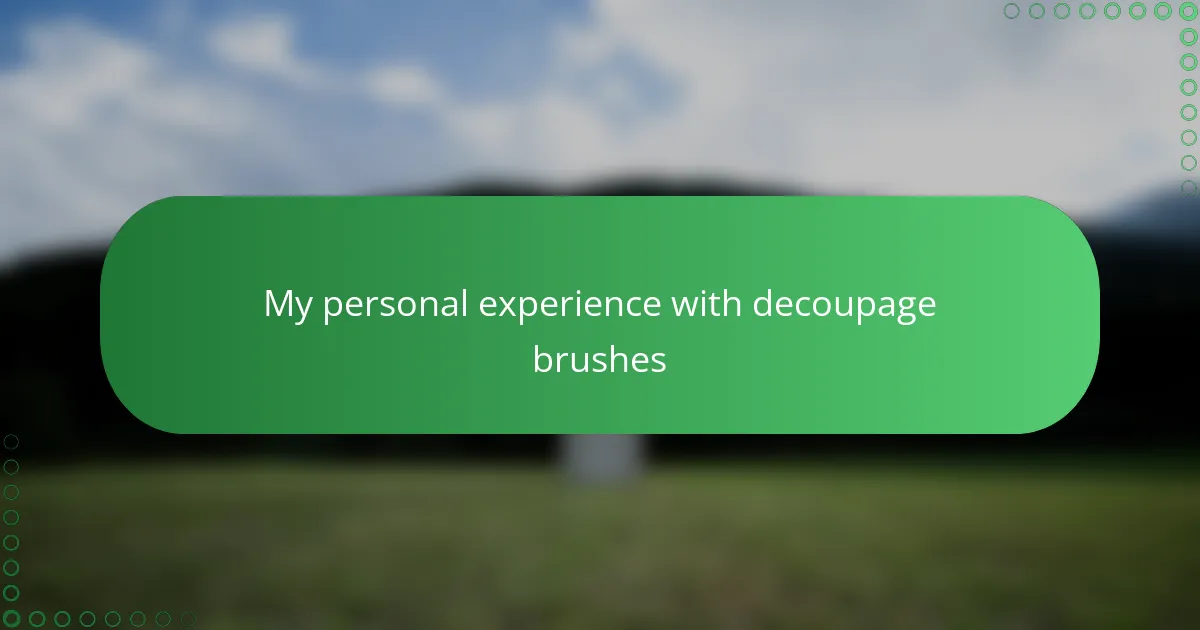
My personal experience with decoupage brushes
I remember the first time I truly understood the value of a quality decoupage brush—it was when a cheap, stiff brush ruined an almost finished project by tearing the paper. That experience taught me to invest in brushes with soft, flexible bristles, which now feel like an extension of my hand during every project. Have you ever felt that sense of frustration turn into satisfaction the moment you swap out a tool that just wasn’t right?
Over time, I’ve grown fond of brushes that offer a smooth glide without leaving streaks, especially when working with delicate handmade paper. There’s a real joy in seeing glue spread evenly under the gentle touch of the right brush, almost like the tool itself is collaborating with me. Doesn’t it feel rewarding when your materials and tools work harmoniously to bring your vision to life?
Sometimes, I pause mid-project just to appreciate how the brush’s shape makes intricate details easier to handle. Using a fine-tipped brush to smooth edges without tearing feels like a small victory every time. It’s moments like these that remind me why I keep experimenting with different brushes—it’s not just about the end result, but the crafting journey itself.
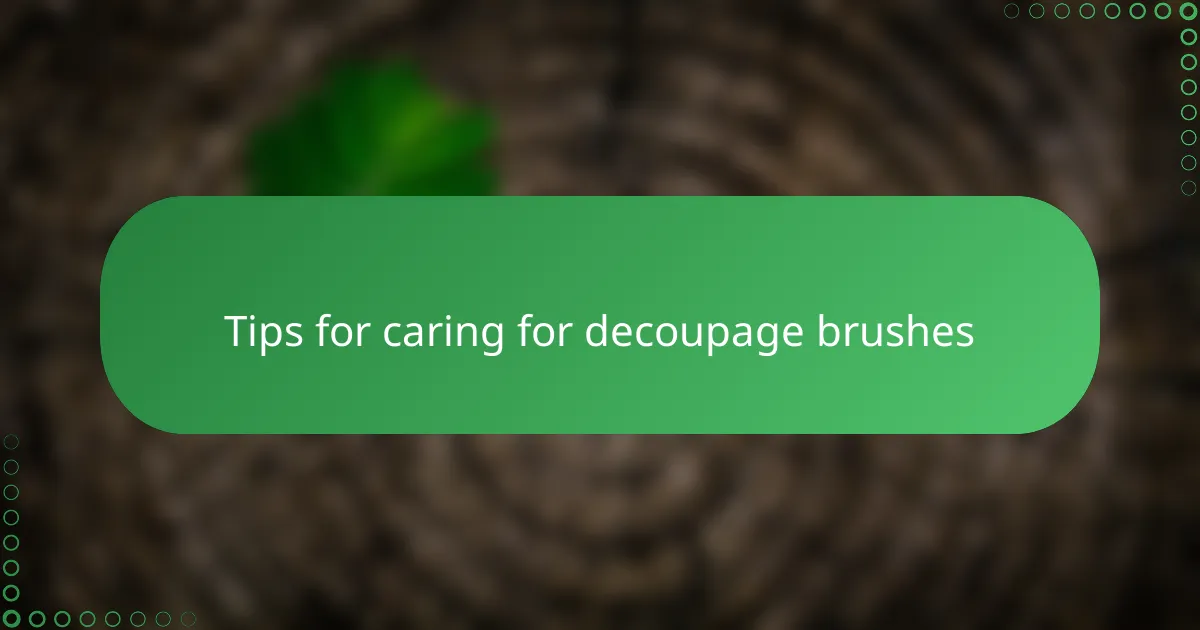
Tips for caring for decoupage brushes
One crucial tip I quickly learned is to clean my decoupage brushes immediately after use. Waiting too long allows glue to dry and harden in the bristles, which can ruin their softness and make future brush strokes uneven. Have you ever tried scrubbing dried glue off your brush? It’s frustrating and often futile—I’ve been there, and it’s a lesson in timely care.
Another thing I swear by is using gentle, lukewarm water instead of hot water when rinsing my brushes. Hot water can cause the bristles to warp or lose their natural resilience, which makes a noticeable difference in how smoothly they apply adhesives. It surprises me how small adjustments in care can preserve the brushes’ lifespan much longer than expected.
Finally, I always reshape the bristles with my fingers after washing, ensuring the brush dries in its original form. Letting the brushes dry flat or bristle-side down helps avoid misshaping, which, in turn, keeps those precise edges I rely on for delicate paper work. Trust me, a little patience here saves hours of frustration later on.
